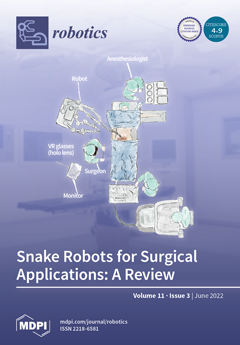Mobile robots that are capable of multiple modes of locomotion may have tangible advantages over unimodal robots in unstructured and non-homogeneous environments due to their ability to better adapt to local conditions. This paper specifically considers the use of a team of multimodal robots capable of switching between aerial and terrestrial modes of locomotion for wilderness search and rescue (WiSAR) scenarios. It presents a novel search planning method that coordinates the members of the robotic team to maximize the probability of locating a mobile target in the wilderness, potentially, last seen on an
a priori known trail. It is assumed that the search area expands over time and, thus, an exhaustive search is not feasible. Earlier research on search planning methods for heterogeneous though unimodal search teams have exploited synergies between robots with different locomotive abilities through coordination and/or cooperation. Work on multimodal robots, on the other hand, has primarily focused on their mechanical design and low-level control. In contrast, our recent work, presented herein, has two major components: (i) target-motion prediction in the presence of
a priori known trails in the wilderness, and (ii) probability-guided multimodal robot search-trajectory generation. For the former sub-problem, the novelty of our work lies in the formulation and use of 3D probability curves to capture target distributions under the influence of
a priori known walking/hiking trails. For the latter, the novelty lies in the use of a tree structure to represent the decisions involved in multimodal probability-curve-guided search planning, which enables trajectory generation and mode selection to be optimized simultaneously, for example, via a Monte Carlo tree search technique. Extensive simulations, some of which are included herein, have shown that multimodal robotic search teams, coordinated via the trajectory planning method proposed in this paper, clearly outperform their unimodal counterparts in terms of search success rates.
Full article





